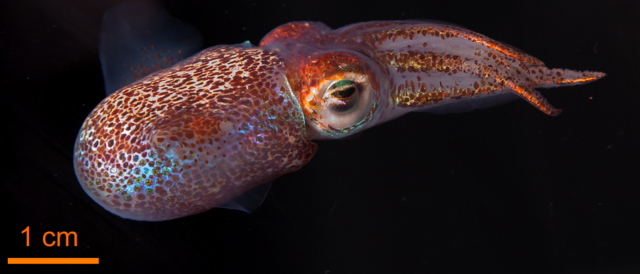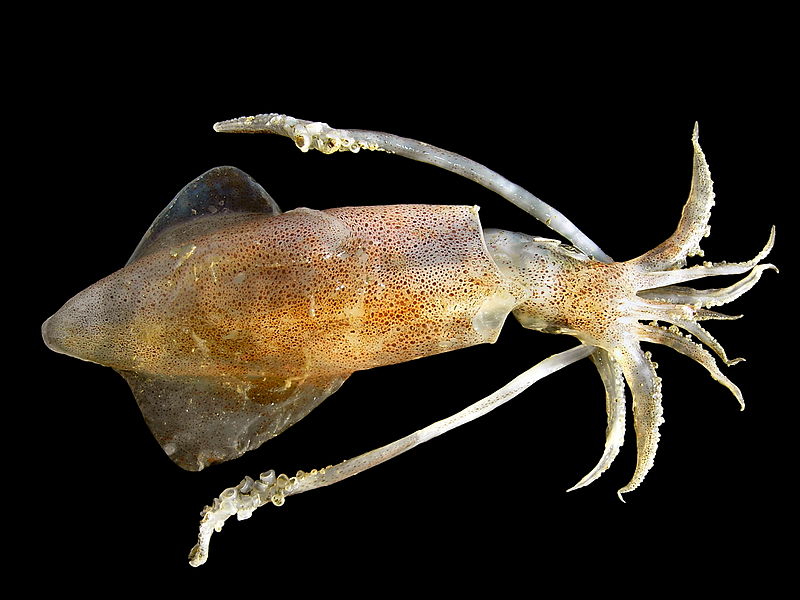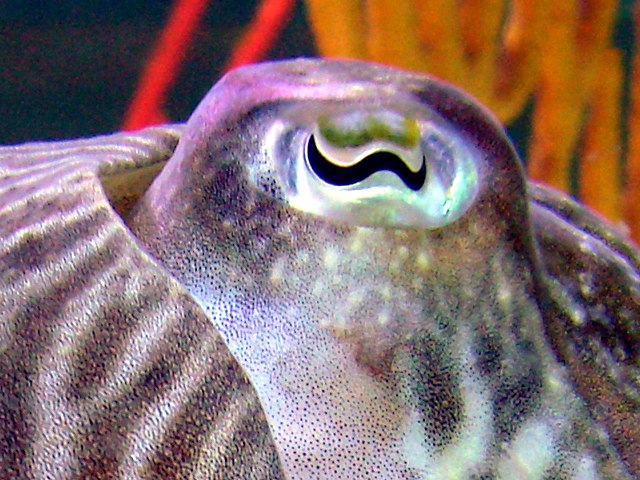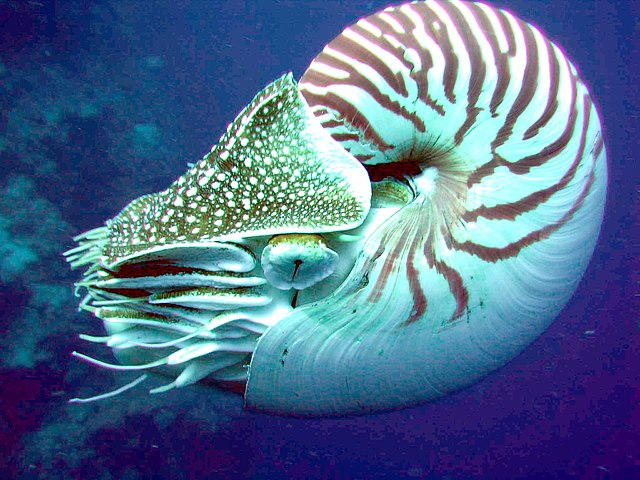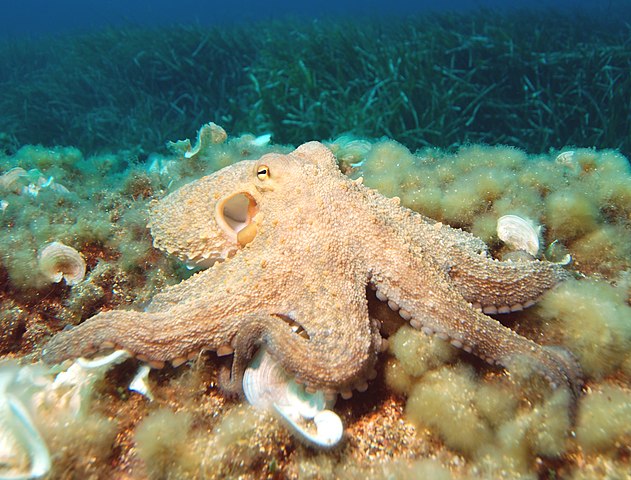We just learned about the Cirroteuthis.
Another type of cephalopod is the Firefly Squid also known as watasenia scintillans.
They are usually about 3 inches long, and live in the Pacific Ocean.
This type of squid is bioluminescent.
That means parts of its body light up, kind of like a firefly.
There are tiny little dots all over the squid's body with organs called photophores.
The squid uses these photophores to light up, which makes small fish swim toward them, and they eat them up!
It also uses its body lights to make its top bright and bottom dark so it can hide from other predators.
When it is looking around for another firefly squid it will light up it's whole body as a signal.
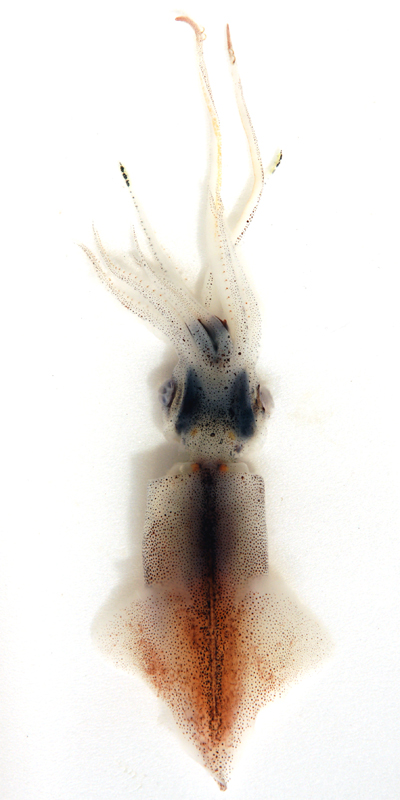
(from: wikipedia - firefly squid)
Firefly squid / Shine blue beach in Toyama Bay - SuiTube5
Kid Facts - Blast from the past: Goliath Frog




